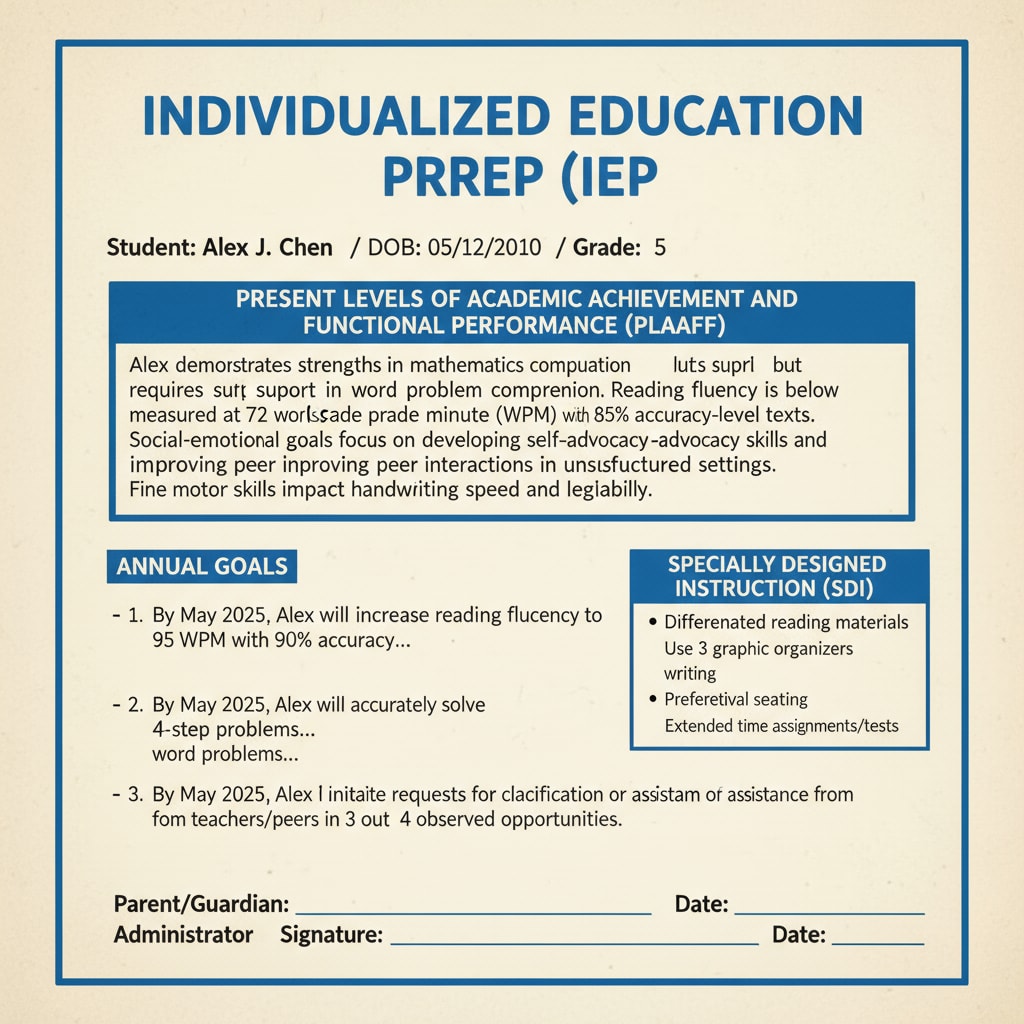Special education, IEP, reading comprehension difficulties are issues that many special education professionals encounter. The Individualized Education Program (IEP) is a crucial document in special education, designed to meet the unique needs of each student with disabilities. However, special education teaching assistants often struggle to fully understand these documents. This article will explore the challenges they face, the reasons behind them, and effective strategies to overcome these difficulties.

The Challenges of IEP Comprehension
One of the main challenges is the complex language used in IEPs. These documents are filled with educational jargon and technical terms that can be confusing for those not well-versed in the field. For example, terms like “present level of academic achievement and functional performance” and “least restrictive environment” require a deep understanding of special education concepts. In addition, the long and detailed nature of IEPs can be overwhelming. They often include multiple sections covering various aspects of a student’s education, from goals and objectives to accommodations and services. Understanding the Basics of an IEP on Understood.org

Reasons for Reading Comprehension Difficulties
There are several reasons for these reading comprehension difficulties. Firstly, lack of training is a significant factor. Many special education teaching assistants may not have received comprehensive training on how to read and interpret IEPs. Without proper guidance, it’s difficult to make sense of the complex information. Secondly, the diverse nature of IEPs can also pose a problem. Each student’s IEP is unique, tailored to their specific needs and circumstances. This variability makes it challenging to develop a standardized approach to understanding them. NCSET’s Resources on IEPs
Another reason is the time constraints. Special education teachers are often busy with multiple tasks, such as classroom management and direct instruction. This leaves them with limited time to thoroughly read and understand each IEP. As a result, they may miss important details or fail to fully grasp the implications of the goals and services outlined in the document.
Strategies to Overcome Comprehension Challenges
To address these challenges, several strategies can be implemented. One effective approach is to provide in-depth training for special education teaching assistants. This training should cover not only the basic components of an IEP but also how to analyze and interpret the information. For example, workshops and online courses can be organized to help teachers develop the necessary skills. In addition, creating a support network among special education professionals can be beneficial. Teachers can share their experiences and insights, and collaborate on understanding difficult IEPs.
Another strategy is to simplify the language used in IEPs. While it’s important to maintain accuracy and professionalism, using more plain language can make the documents more accessible. Schools and districts can also provide templates or guides to help standardize the format of IEPs, making them easier to read and compare. Moreover, setting aside dedicated time for IEP review can ensure that teachers have enough time to carefully study each document and ask questions if needed.
Readability guidance: By summarizing the key points in short paragraphs and lists, we can make the content more accessible. Each H2 section provides a focused list of ideas. We’ve also controlled the use of passive语态 and long sentences, and added transitional words like “however,” “therefore,” and “in addition” to improve the flow of the article.


